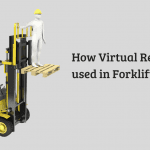
Navigating the Roads Safely: Insights from Seasoned Drivers on Mastering Hazard Perception
Becoming a skilled and responsible driver goes beyond acing the Hazard Perception Test (HPT); it involves developing a keen sense of hazard perception that extends to real-world driving scenarios.
In this comprehensive guide, we will delve into the invaluable insights shared by experienced drivers—pros who have accumulated years of on-the-road wisdom. Their tips and perspectives will serve as a roadmap for aspiring drivers, offering practical advice on mastering hazard perception and fostering a mindset of safety and vigilance.
Table of Content
- 1 Section 1: The Power of Anticipation
- 2 Section 2: Utilizing Past Experiences
- 3 Section 3: Developing a 360-Degree Awareness
- 4 Section 4: Adapting to Different Environments
- 5 Section 5: Staying Calm under Pressure
- 6 Section 6: The Role of Intuition
- 7 Section 7: Regular Self-Assessment
- 8 Section 8: Collaborative Learning from Peers
- 9 Conclusion
Section 1: The Power of Anticipation
Experienced drivers emphasize the importance of anticipation in hazard perception. According to these pros, successful hazard perception is not merely reacting to immediate dangers but anticipating potential risks before they fully materialize. This forward-thinking approach allows drivers to stay one step ahead, providing ample time to assess and respond to evolving situations. Aspiring drivers can benefit from cultivating the habit of anticipating potential hazards by continuously scanning the road and assessing the environment for early cues.
Section 2: Utilizing Past Experiences
Seasoned drivers often draw on their past experiences to navigate current hazards effectively. They stress the significance of learning from near misses, challenging situations, and unexpected events. Aspiring drivers can leverage this insight by reflecting on their own practice sessions and real-world encounters during training. By actively incorporating lessons learned from past experiences, drivers can refine their hazard perception skills and build a mental database of potential risks.
Section 3: Developing a 360-Degree Awareness
Experienced drivers stress the importance of maintaining a 360-degree awareness of the road environment. This involves regularly checking mirrors, scanning blind spots, and being aware of the entire surroundings. By developing a habit of consistently monitoring all aspects of the road, drivers can minimize the chances of missing critical hazards that may emerge from unexpected directions. Aspiring drivers can adopt this comprehensive scanning approach during practice sessions to ingrain a habit of continuous awareness.
Section 4: Adapting to Different Environments
Pros emphasize the need for adaptability in hazard perception, particularly when transitioning between diverse driving environments. Urban streets, rural roads, and highways present distinct challenges, and experienced drivers stress the importance of adjusting one’s perception strategy accordingly. Aspiring drivers can benefit from practising hazard perception test practice in various settings, exposing themselves to the unique challenges posed by different environments and refining their adaptability to diverse driving conditions.
Section 5: Staying Calm under Pressure
Maintaining composure under pressure is a skill that experienced drivers highlight as crucial for effective hazard perception. High-stress situations, unexpected obstacles, or sudden changes in traffic conditions require drivers to stay calm and focused. Aspiring drivers can develop this skill through simulated scenarios that mimic the pressures of real-world driving. Practicing hazard perception under different levels of stress prepares drivers to make sound decisions even in challenging situations.
Section 6: The Role of Intuition
Experienced drivers often speak about the role of intuition in hazard perception. While adherence to traffic rules is paramount, seasoned drivers note that intuition, honed through years of experience, plays a vital role in anticipating potential risks. Aspiring drivers can gradually develop their intuitive sense by actively engaging in hazard perception practice and exposure to a variety of driving scenarios. Over time, intuition becomes a valuable ally in hazard detection.
Section 7: Regular Self-Assessment
Pros stress the importance of regular self-assessment to enhance hazard perception skills continually. Reflecting on one’s performance, identifying areas for improvement, and actively seeking opportunities for growth contribute to ongoing skill development. Aspiring drivers can integrate regular self-assessment into their practice routine, encouraging a proactive approach to skill refinement and a commitment to lifelong learning in hazard perception.
Section 8: Collaborative Learning from Peers
Experienced drivers highlight the benefits of collaborative learning from peers in enhancing hazard perception skills. Sharing insights, discussing challenging scenarios, and exchanging tips contribute to a collective understanding of effective hazard detection. Aspiring drivers can foster a culture of collaborative learning by engaging in discussions with peers, participating in group practice sessions, and learning from each other’s experiences.
Conclusion
In conclusion, the insights shared by experienced drivers offer a wealth of knowledge for aspiring drivers seeking to master hazard perception. The power of anticipation, utilizing past experiences, developing a 360-degree awareness, adapting to different environments, staying calm under pressure, relying on intuition, regular self-assessment, and collaborative learning from peers are key themes that emerge from the collective wisdom of seasoned drivers.
By incorporating these tips into their training, aspiring drivers can not only excel in the Hazard Perception Test but also cultivate a mindset of safety and vigilance that extends to their entire driving journey. The road to becoming a skilled and responsible driver involves not just the mastery of rules but a commitment to continuous learning and adaptation—a journey enriched by the shared experiences and insights of those who have traveled the road before.


